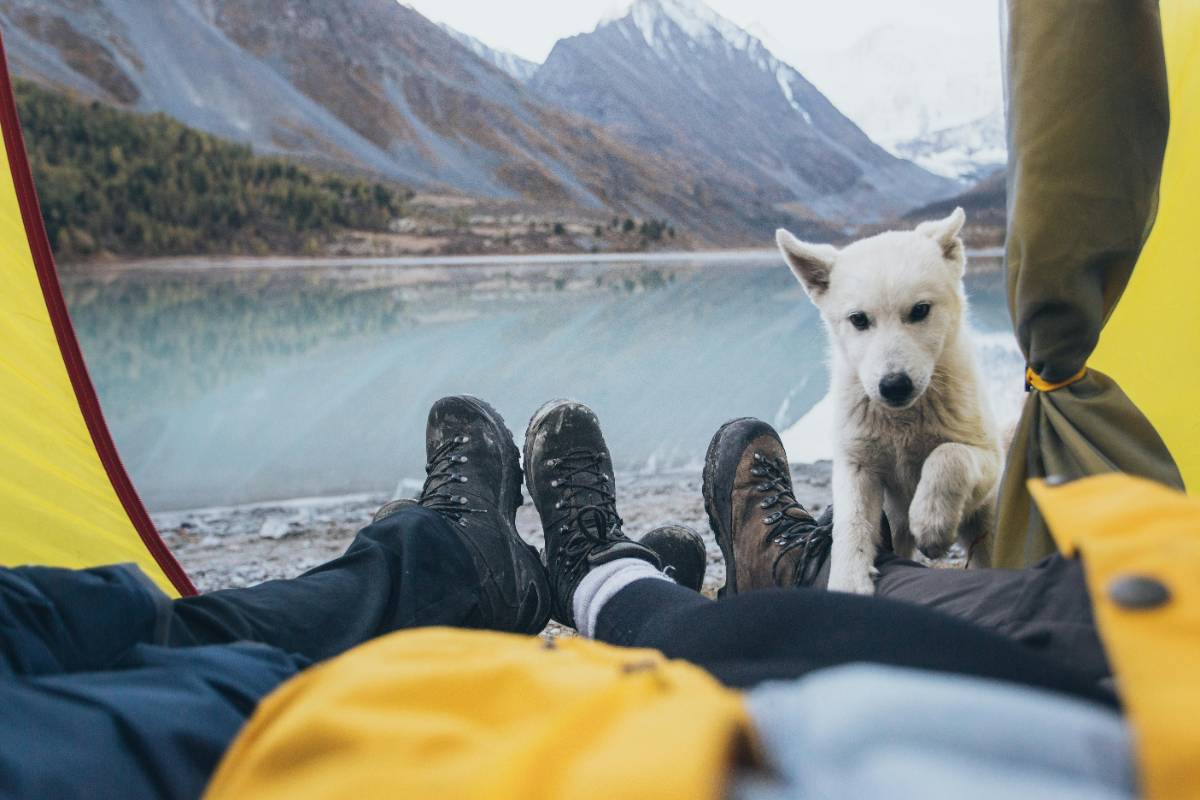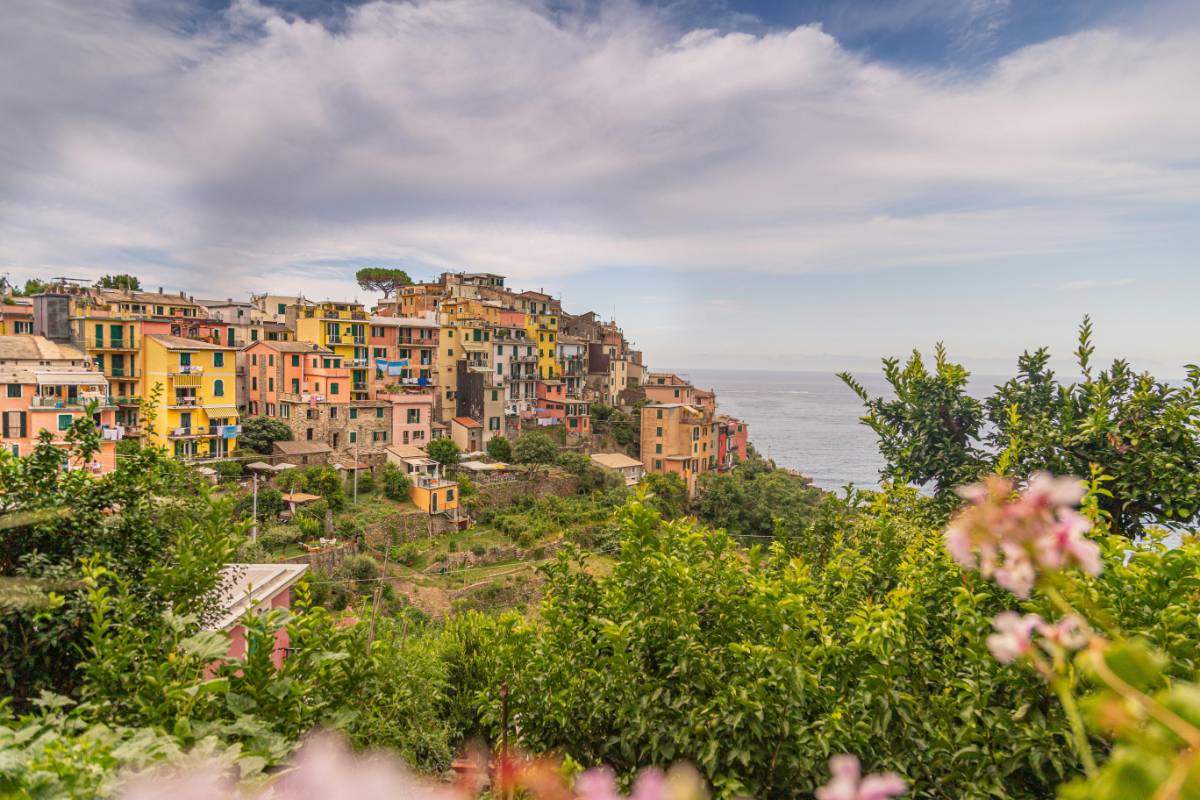
The foundation of packing light is selecting clothing that serves multiple purposes. You should aim for items that can be mixed and matched, so you can create different outfits with fewer clothes. Neutral colors like black, white, gray, navy, and beige are ideal because they pair well with almost anything. This means you can combine fewer items to create multiple outfits, whether it’s for a day of sightseeing or an evening dinner.
By John Michael Smith · 30 Jul 2025
Packing light is a skill that makes travel easier, saves on baggage fees, and allows you to focus on the adventure rather than lugging around heavy bags. Whether you’re heading to a tropical beach or a snowy mountain, packing efficiently can transform your travel experience. Learning to pack light is not just about reducing weight; it’s about being strategic in what you choose to bring and how you organize it. By following a few key strategies, you can streamline your packing process and enjoy more flexibility and comfort during your travels. Here are some essential tips to pack efficiently for any destination, whether you’re heading out for a weekend getaway, a business trip, or a long vacation.
 Choose Versatile Clothing
Choose Versatile ClothingThe foundation of packing light is selecting clothing that serves multiple purposes. You should aim for items that can be mixed and matched, so you can create different outfits with fewer clothes. Neutral colors like black, white, gray, navy, and beige are ideal because they pair well with almost anything. This means you can combine fewer items to create multiple outfits, whether it’s for a day of sightseeing or an evening dinner.
For example, instead of packing several different colored shirts, choose a few versatile ones that can be worn in a variety of ways. A simple black t-shirt can be paired with jeans for casual outings or dressed up with a scarf or jewelry for a more formal look. Similarly, a versatile dress can serve as both a beach cover-up during the day and a fancy outfit for dinner at night. A lightweight jacket or cardigan is another versatile piece that can work in a variety of weather conditions and environments.
When it comes to pants or skirts, choose items that can be worn in both casual and semi-formal settings. For example, a pair of dark-colored jeans or chinos can be dressed up with a nice shirt or dressed down with a t-shirt. Instead of packing several pairs of shoes, opt for a versatile pair of sandals, sneakers, or flats that can match different outfits and serve different purposes, whether it’s for hiking, casual sightseeing, or an evening out.
Layering is another key element of packing light. Instead of packing multiple jackets or sweaters, choose thin, layerable pieces that can keep you warm in chilly weather. For example, a light fleece or a soft cardigan can be layered over shirts and dresses when temperatures dip. Layers also allow you to adapt to different weather conditions, which is especially important for travelers going to destinations with unpredictable climates.
Limit Shoes and AccessoriesShoes can take up a significant amount of space in your luggage, so it’s important to limit the number of pairs you pack. When selecting shoes, consider the activities you’ll be doing and the types of terrain you’ll encounter during your trip. For example, a comfortable pair of walking shoes or sneakers is essential for city exploration or outdoor excursions, while a pair of sandals or flip-flops can serve as a more casual footwear option. If you need a more formal option for dinner or an event, choose a versatile pair of flats, heels, or dress shoes that are comfortable and lightweight.
Avoid packing shoes that you won’t actually wear, as they take up precious space in your luggage. Stick to two or three pairs that can serve all your needs, and try to make sure they’re comfortable enough to wear all day. It's also important to consider the weight of the shoes; opt for lightweight options that won’t burden your bag. This will leave more room for other essentials.
Accessories can also add unnecessary bulk to your luggage if you overpack them. Instead of bringing a wide variety of jewelry or accessories, choose a few key items that can complement different outfits. A versatile scarf, for example, can be used as an accessory for both day and night, and can also double as a blanket or shawl in colder weather. Opt for lightweight, simple pieces that add a touch of style without taking up too much space.
Rolling clothes is one of the most effective packing techniques for saving space and keeping your suitcase organized. By rolling your clothes, you create more room in your bag, and you can avoid wrinkles that often come with folding. This technique works especially well for items like t-shirts, pants, dresses, and lightweight sweaters.
In addition to saving space, rolling clothes makes it easier to access what you need without having to unpack everything. You can roll clothing in layers or use packing cubes to group similar items together. Packing cubes are small, zippered bags that help you organize your clothes and keep them in place during travel. They also help compress clothes, making them take up less space in your luggage.
Packing cubes come in different sizes, allowing you to sort clothing based on type or function. For example, one cube can hold your tops, while another can hold your pants and dresses. This organization helps you avoid the need to search through a jumbled bag for a specific item, and it makes your packing process more efficient overall.
For delicate items, such as dresses or jackets, consider folding them neatly and placing them at the top of your bag or in a garment bag. This will help reduce wrinkles and ensure that your nicer pieces stay in good condition throughout your trip.
One of the most common mistakes people make when packing is overloading their bags with full-size toiletries. Instead of packing bulky bottles of shampoo, conditioner, body wash, and lotion, opt for travel-sized versions that comply with airline regulations. Most airports allow toiletries in containers of 3.4 ounces (100 milliliters) or less, which can be easily found in most travel stores.
If you’re trying to save even more space, consider using solid toiletries instead of liquids. Solid shampoo bars, conditioner bars, and soap bars are compact, lightweight, and leak-proof. Not only will they save you space in your bag, but they’re also eco-friendly and convenient for air travel. Solid items typically last longer than their liquid counterparts, which makes them a great option for long trips.
Another space-saving trick is to decant your favorite toiletries into smaller bottles. Refill travel-sized containers with your regular shampoo, conditioner, and lotion. This way, you’ll have the products you know and love while keeping your packing light and efficient.
Don’t forget about other essential items like sunscreen, toothpaste, deodorant, and face wash. Travel-sized versions of these products are widely available and can be easily packed into a toiletry bag that fits in your carry-on luggage. You can also consider packing multi-use items, such as a 2-in-1 shampoo and conditioner, to reduce the number of products you need.
 Use a Packing Checklist
Use a Packing ChecklistA packing checklist is an essential tool for packing light, as it helps you stay organized and avoid overpacking. Creating a list of the items you need before you start packing will allow you to prioritize the essentials and make sure you don’t forget anything important. Begin by making a list based on your destination, the weather, and the activities you’ll be doing.
Start with the basics: clothes, toiletries, and essential electronics like a phone, charger, and camera. Add other items like a book, headphones, or sunglasses to your list based on your preferences and needs. Once your checklist is complete, review it to make sure you haven’t packed anything you won’t actually use. Try to eliminate any redundant items or things that you can purchase at your destination if needed.
By sticking to your packing checklist, you’ll avoid the temptation to add unnecessary items at the last minute, which can result in overpacking. The list also helps you stay efficient by allowing you to gather all your items in one go, making the packing process faster and less stressful.
Wear Bulky Items on the PlaneOne of the easiest ways to save space in your luggage is to wear your bulkiest clothing items on the plane. This is particularly useful if you’re traveling to a colder destination, as coats, jackets, and boots can take up a lot of space in your suitcase. Wearing them while traveling will keep your bag light and make sure you stay warm during the flight.
If you’re traveling with a heavy winter coat, boots, or sweater, consider wearing these items during your flight. Not only will this save space in your bag, but it also ensures that you’ll have the right gear when you arrive at your destination. If your coat is too bulky to wear on the plane, consider carrying it as your personal item or draping it over your arm to free up space in your luggage.
By wearing your bulkiest items, you can avoid the hassle of trying to fit them into your bag. You’ll also feel more comfortable on your journey, as you'll have your warm layers ready to go as soon as you land.
ConclusionPacking light allows for a hassle-free travel experience, giving you the freedom to explore without the burden of heavy luggage. By choosing versatile clothing, limiting shoes and accessories, rolling your clothes, using travel-sized toiletries, and following a packing checklist, you can efficiently pack for any trip, no matter the destination. The key to packing light is being mindful of your choices and focusing on what you truly need. When you pack light, you’ll have more space in your luggage, more energy during your travels, and more flexibility to enjoy your trip without the weight of excess baggage.
Subscribe to our newsletter to get our newest articles instantly!

Senior Contributor
John Michael Smith is passionate about impactful storytelling. With a unique voice and deep insights, they turn everyday stories into compelling reads that resonate and inform.
Read Full Bio
Movies have the incredible power to transport us to fantastical worlds, but what if we told you that some of those iconic movie locations can actually be visited in real life? From the lush landscapes of Middle-earth to the sun-soaked beaches of Greece, here are some famous movie locations you can visit and experience firsthand.1332a.jpg***Hobbiton, New Zealand - "The Lord of the Rings" TrilogyNew Zealand’s breathtaking landscapes played a crucial role in bringing J.R.R. Tolkien’s Middle-earth to life in Peter Jackson's "The Lord of the Rings" trilogy. One of the most iconic locations is Hobbiton, the fictional village where Frodo Baggins and his friends lived.Located in Matamata on the North Island, Hobbiton has been transformed into a permanent tourist attraction. Visitors can take a guided tour through the village’s rolling green hills, stroll through the iconic hobbit holes, and enjoy a pint at the Green Dragon Inn, just like in the movies.***Alnwick Castle, England - "Harry Potter" SeriesAlnwick Castle in Northumberland, England, is one of the most recognizable movie locations for "Harry Potter" fans. This 11th-century castle was used as the exterior of Hogwarts in the first two "Harry Potter" films.While the interior of Hogwarts was filmed on set, the castle’s stunning grounds, including the famous flying lesson scene, were shot here. Visitors to Alnwick can explore the castle and its beautiful gardens, and even participate in broomstick training just like Harry Potter did!***The Real "La La Land" Los Angeles, USAThe movie "La La Land" was a love letter to Los Angeles, and many of its iconic scenes were filmed in some of the city’s most recognizable locations. One of the best ways to experience the film in real life is by visiting the Griffith Observatory, where Emma Stone and Ryan Gosling danced under the stars.Another key location is the famous staircase at the Hollywood Bowl, where they share a romantic moment during the film's opening number. Take a walk through these and other spots to relive the magic of "La La Land."1332b.jpg***The Colosseum, Rome - "Gladiator"The Colosseum in Rome is one of the most iconic landmarks in the world, and it also played a starring role in Ridley Scott’s "Gladiator." The film’s dramatic battle scenes and gladiator duels were filmed in and around this ancient amphitheater, which has stood the test of time since AD 80.When visiting the Colosseum, you can explore the arena, the underground chambers where gladiators once prepared for battle, and take in the stunning views of the city. The Colosseum remains a testament to ancient Roman history and is a must-see for history buffs and movie lovers alike.***The Beaches of Skopelos, Greece - "Mamma Mia!"The beautiful island of Skopelos in Greece provided the stunning backdrop for the 2008 film "Mamma Mia!" From the colorful buildings of Skopelos Town to the picturesque beaches, this Greek island is as idyllic in real life as it appears on screen.One of the most iconic locations is the Agios Ioannis Chapel, perched on a rocky outcrop overlooking the sea, where Meryl Streep's character sings "The Winner Takes It All." Fans of the movie can visit these unforgettable locations, explore the charming island, and enjoy the sun-kissed beaches.***The Dark Knight’s Gotham City, Chicago, USAThe bustling streets of Chicago were transformed into the fictional Gotham City in Christopher Nolan’s "The Dark Knight." Locations like the Chicago Board of Trade Building and the old Cook County Hospital provided the dark, gritty backdrop to the action-packed scenes featuring Batman and the Joker.Fans of the film can visit these iconic spots in the city, including the intersection where the Batmobile races through the streets. Chicago offers a unique opportunity to walk in the footsteps of your favorite superheroes and villains.***Neuschwanstein Castle, Germany - "Chitty Chitty Bang Bang"Germany’s Neuschwanstein Castle is often cited as the inspiration for Disney’s Sleeping Beauty Castle, but it also appeared in the 1968 film "Chitty Chitty Bang Bang." This fairy-tale castle, located in the Bavarian Alps, was the backdrop for some of the movie’s most magical moments.Visitors can tour the castle and enjoy stunning views of the surrounding mountains and countryside. The castle’s intricate architecture and lush surroundings make it a must-see for movie fans and history enthusiasts alike.***Bora Bora, French Polynesia - "The Bounty"Bora Bora, known for its crystal-clear waters and stunning landscapes, became famous in part because of its role in the 1984 film "The Bounty," which starred Mel Gibson and Anthony Hopkins. The movie’s dramatic depictions of the island’s pristine beauty are still a major draw for visitors today.Travelers can explore Bora Bora’s pristine beaches, go snorkeling with colorful marine life, or take a boat tour to fully appreciate the stunning surroundings that made it the perfect location for a tropical adventure film.***ConclusionFrom the rolling hills of New Zealand’s Hobbiton to the grand Colosseum in Rome, these iconic movie locations offer an unforgettable travel experience for movie buffs and adventure seekers alike. Whether you're reenacting your favorite scenes or simply soaking in the beauty of these spots, visiting real-life movie locations is a fantastic way to connect with your favorite films and explore the world in a new way.
By Abraham Benjamin · 16 Aug 2025

Traveling with pets can be a rewarding experience, allowing you to explore new destinations while having your furry companions by your side. However, it requires careful planning and preparation to ensure a smooth journey for both you and your pet. From finding pet-friendly accommodations to knowing the rules and regulations of different countries, here are some helpful tips for traveling the world with your pets.1304a.jpg***Check Airline Pet PoliciesBefore booking your flight, it's essential to check the airline’s pet policies. Each airline has its own set of rules regarding pet travel, including carrier size, fees, and whether pets are allowed in the cabin or must travel in the cargo hold. Some airlines are more pet-friendly than others, so it’s worth doing some research to find the best option for your pet.Additionally, ensure that your pet has all the required health certificates and vaccinations to meet the airline's requirements. Some airlines also recommend a pre-flight health check-up to ensure your pet is fit for travel.***Choose Pet-Friendly AccommodationsNot all hotels, vacation rentals, or resorts welcome pets, so it's crucial to find pet-friendly accommodations before you travel. Many destinations now offer a wide variety of pet-friendly hotels, resorts, and vacation homes that cater to the needs of travelers with pets.Websites like BringFido and PetsWelcome can help you find accommodations that allow pets. Be sure to check the hotel’s pet policy for any additional fees, weight limits, or restrictions. Some accommodations may also offer pet amenities like beds, food bowls, and walking services to make your pet feel more at home.***Prepare Your Pet for TravelIf your pet isn’t accustomed to travel, it’s important to start preparing them ahead of time. Gradually get your pet used to being in their travel carrier by taking them on short trips. Familiarizing them with the carrier will help reduce stress during the actual travel.For pets traveling in the cabin, make sure their carrier meets the size requirements and that they’re comfortable during the flight. You can also use calming products like pheromone sprays or calming collars to help ease your pet’s anxiety during travel.1304b.jpg***Know the Rules of Your DestinationEach country has its own set of regulations for bringing pets, so it’s important to familiarize yourself with the rules of your destination before you go. Some countries require pets to be quarantined upon arrival, while others may have specific vaccination or health documentation requirements.Research pet importation laws for the country you're visiting to avoid any surprises. The USDA, CDC, and embassy websites often provide up-to-date guidelines on pet travel.***Pack Essentials for Your PetWhen traveling with your pet, it’s essential to pack all the necessary supplies to ensure their comfort and well-being throughout the journey. Some key items to bring include your pet’s food, water, bowls, medications, toys, a leash, and a waste bag dispenser.Don’t forget important documents, such as your pet’s health records, vaccination certificates, and any necessary travel permits. Having everything in one place will make it easier to navigate the travel process.***Consider Pet Travel InsuranceTravel insurance for pets can provide peace of mind in case of emergencies while abroad. Pet travel insurance covers things like medical treatment, travel delays, lost pets, and evacuation in the event of a natural disaster or other emergencies.It’s a good idea to research pet insurance policies that cover international travel and ensure you’re fully protected during your journey.***Top Pet-Friendly DestinationsWhen choosing a destination, consider places known for being pet-friendly. Here are some of the top destinations around the world that are welcoming to pets:Paris, France: Paris is one of the most pet-friendly cities in Europe, with many cafes, parks, and hotels that allow pets. You can even take your dog on the metro or to the famous cafés along the Seine.Vancouver, Canada: Vancouver offers plenty of pet-friendly parks and trails, as well as many pet-friendly hotels and cafes. It’s a great place to explore with your dog, especially if you love nature and outdoor activities.Amsterdam, Netherlands: Amsterdam is a very pet-friendly city, with many restaurants, parks, and shops that allow pets. The city's relaxed atmosphere makes it easy for pets and their owners to enjoy the sights.Sydney, Australia: Sydney boasts beautiful beaches and parks that welcome dogs, including the famous Bondi Beach. There are also many dog-friendly cafes and accommodations.Costa Rica: Costa Rica is known for its pet-friendly accommodations and laid-back vibe. Many beaches and national parks allow pets, making it a perfect destination for nature-loving pet owners.***ConclusionTraveling with pets is an enriching experience that allows you to share new adventures with your furry friends. By planning ahead and following these tips, you can ensure that your journey is as stress-free as possible for both you and your pet. Whether you're heading to a nearby destination or exploring a faraway land, there’s no reason why your pet can’t be a part of the adventure. Bon voyage!
By Christopher David Wilson · 05 Aug 2025

A road trip across the United States offers an unforgettable experience, allowing you to explore the country's diverse landscapes, cultures, and landmarks. Whether you're planning a short getaway or a cross-country adventure, proper planning is essential for making the most of your journey. Here are some tips to help you plan the perfect road trip.1334a.jpg***Decide on Your Route and DestinationsThe first step in planning a successful road trip is deciding on your route and key destinations. Consider the places you’ve always wanted to visit and the landmarks you’d like to see. There are several popular routes, such as the Pacific Coast Highway, Route 66, and the Great River Road, each offering unique attractions.Make sure to take into account how much time you have for your trip. If you’re planning a long road trip, map out your main stops and include smaller, off-the-beaten-path destinations along the way for a more immersive experience.Planning your route will help you organize your time and ensure you make the most of each stop.***Budget Your TripRoad trips can be affordable, but it's important to set a budget before you hit the road. Consider costs for gas, accommodation, food, and activities at each stop. You can save money by camping, staying in budget hotels, or booking accommodation in advance.It’s also important to factor in unexpected costs, such as roadside emergencies or detours. Having a financial cushion will help you enjoy your trip without stress.***Pack SmartlyPacking smart is essential for a smooth road trip. Make sure to pack light, bringing only the essentials, but also include a few extra items for comfort. Some things to remember include clothes for different weather conditions, personal hygiene products, medications, and snacks for the road.Don't forget your electronics—chargers, GPS, and cameras can come in handy for navigation and capturing memories along the way.***Prepare Your VehicleBefore embarking on a long road trip, make sure your vehicle is in good condition. Check tire pressure, oil levels, brakes, and fluid levels. A thorough check-up can prevent costly breakdowns on the road.Additionally, make sure you have a spare tire, jack, jumper cables, and other emergency supplies, just in case you run into any issues while on the road.***Plan Your AccommodationsWhile it’s possible to find places to stay on the fly, it’s often better to book your accommodations in advance, especially in popular tourist areas. Depending on your route and preferences, you can opt for motels, hotels, or campgrounds.If you’re looking for a unique experience, consider staying in a charming bed and breakfast or renting a cabin. Having a place to stay sorted out ahead of time can help reduce stress and make your trip more enjoyable.1334b.jpg***Consider Time for ExplorationA road trip is not just about getting from point A to point B; it’s about enjoying the journey. Plan time for sightseeing, exploring local attractions, and relaxing. You don’t have to rush from one destination to the next—take time to explore unique places along the way.For instance, stop by national parks, visit quirky roadside attractions, and try regional foods. The beauty of a road trip is in the small, unexpected moments.***Stay Safe on the RoadSafety should always be a priority on a road trip. Make sure to follow traffic laws, take breaks when needed, and avoid driving when tired. It’s also a good idea to have a roadside assistance plan in case you encounter any issues during your trip.Staying safe also means keeping your vehicle well-maintained, having a first-aid kit handy, and having emergency contact information easily accessible.***Create a Playlist or Download PodcastsOne of the best parts of a road trip is the music. Create a playlist of your favorite songs or download podcasts that interest you. A good playlist or a series of entertaining podcasts will make the drive more enjoyable and help pass the time.It’s a good idea to download media ahead of time in case you lose signal while traveling through remote areas.***Capture the MomentsA road trip across the United States is a once-in-a-lifetime experience, so make sure to capture the moments along the way. Take photos, document your journey in a travel journal, or vlog your trip.When you look back at the memories, you’ll be grateful for the photos and stories you’ve collected along the way.***ConclusionPlanning a road trip across the United States is an exciting opportunity to explore new places, create memories, and enjoy the freedom of the open road. By taking the time to plan your route, budget, and vehicle preparation, you’ll set yourself up for a successful and enjoyable adventure. Don’t forget to stay safe, be flexible, and, most importantly, have fun on your journey.
By Robert Anthony Brown · 18 Aug 2025

Italy is a country full of rich history, art, and culture, but beyond the well-known cities of Rome, Venice, and Florence lies a treasure trove of lesser-known towns and villages that offer an authentic and peaceful escape. These hidden gems provide a true taste of Italy’s charm and beauty, without the crowds. Here’s an insider’s guide to some of Italy’s best-kept secrets.1342a.jpg***Civita di Bagnoregio, LazioCivita di Bagnoregio is a stunning hilltop village located in the Lazio region of central Italy. Known as the "Dying City," Civita di Bagnoregio is perched on a rocky plateau and can only be accessed by a pedestrian bridge. The village, with its narrow streets and medieval architecture, seems frozen in time. It offers spectacular views of the surrounding valley and is perfect for those looking for tranquility and a step back into history.While the town is small, its charm lies in its quiet streets, ancient stone buildings, and panoramic views. A visit to Civita is like stepping into a fairytale. The village is home to just a few dozen residents, adding to its secluded and peaceful atmosphere.***Matera, BasilicataMatera is one of Italy’s most unique and historic towns. Famous for its ancient cave dwellings, known as the “Sassi,” Matera is a UNESCO World Heritage site that offers an incredible glimpse into Italy’s past. The Sassi are a complex of stone-carved homes and churches, which have been inhabited since prehistoric times.Wandering through the labyrinth of narrow alleys and ancient stone stairways is like traveling back in time. Matera is also known for its local cuisine, including dishes made from the region’s signature grain, farro, and the famous lucanica sausage.***Castelmezzano, BasilicataTucked away in the mountains of Basilicata, Castelmezzano is a picturesque village known for its dramatic landscapes and stunning mountain views. This medieval town is perched on the cliffs of the Dolomiti Lucane mountain range and is a popular destination for hikers and nature lovers.Castelmezzano’s winding streets and charming stone houses are a delight to explore, and visitors can take the thrilling "Volo dell'Angelo" zip line to experience the breathtaking views of the surrounding mountains. The village is also famous for its regional food and wines, making it a hidden gem for food lovers as well.***Orvieto, UmbriaOrvieto is a hilltop town in the heart of Umbria, known for its medieval architecture, stunning cathedral, and panoramic views of the surrounding countryside. The town is built on a volcanic rock plateau, giving it an imposing and dramatic presence. Orvieto is often overlooked by tourists, but it’s a place that offers a mix of history, culture, and natural beauty.The Orvieto Cathedral is a must-see, with its intricately decorated façade and beautiful frescoes. For those interested in history, the town also boasts a network of underground tunnels and caves, which were once used for defensive purposes and to store food and wine.1342b.jpg***Vernazza, Cinque TerreWhile Cinque Terre is a popular tourist destination, Vernazza remains one of its most charming and less crowded villages. Situated on the Ligurian coast, Vernazza is a colorful fishing village that offers stunning views of the Mediterranean Sea. With its narrow streets, vibrant buildings, and quaint harbor, Vernazza exudes charm and authenticity.Visitors can enjoy the stunning scenery by hiking the Cinque Terre trails, which connect Vernazza to the other villages, or simply relax in one of the many cafes overlooking the sea. Vernazza is also known for its excellent seafood, making it a great spot for foodies.***Montefioralle, TuscanyMontefioralle is a small, medieval village located in the Chianti region of Tuscany. Surrounded by vineyards and olive groves, this picturesque town is known for its charming stone houses, cobblestone streets, and stunning views of the Tuscan countryside. Unlike the more tourist-heavy towns in Tuscany, Montefioralle offers a quieter and more authentic Tuscan experience.Wander through the village’s narrow streets, visit the local church of San Bartolomeo, and enjoy a glass of local Chianti wine at one of the village’s small wine bars. Montefioralle is also a great base for exploring the surrounding vineyards and wine estates.***San Gimignano, TuscanySan Gimignano is often referred to as the “Town of Fine Towers” because of its medieval skyline, which is dominated by numerous towers that date back to the 12th century. Located in Tuscany, this charming town offers a mix of history, art, and architecture. Although it’s more known than some of the other hidden towns, it still offers a peaceful and authentic atmosphere, especially if you visit outside the peak tourist season.The town is a UNESCO World Heritage site and boasts a rich history, beautiful frescoes, and excellent local wines. Don’t miss a visit to the Collegiate Church of Santa Maria Assunta, which houses impressive works of art by famous Italian artists.***Pitigliano, TuscanyPitigliano, often called the “Little Jerusalem,” is a stunning town perched on a tufa cliff in southern Tuscany. This unique village is famous for its ancient architecture, including the impressive Pitigliano Cathedral, and its strong Jewish heritage. Pitigliano’s Jewish community has lived in the town for centuries, and visitors can explore the Jewish quarter, visit the old synagogue, and learn about the town’s fascinating history.The town is also known for its wine, particularly the white wine produced in the surrounding vineyards. Pitigliano is perfect for those looking to explore a hidden gem with a rich cultural and historical background.***ConclusionItaly is full of hidden towns and villages that offer a more authentic and peaceful experience than the crowded tourist hotspots. Whether you’re exploring the ancient cave dwellings of Matera or the charming streets of Civita di Bagnoregio, these hidden gems allow you to experience the beauty and culture of Italy in a more intimate way. So, next time you plan your Italian getaway, consider venturing off the beaten path and discovering the country’s best-kept secrets.
By Robert Anthony Brown · 10 Aug 2025